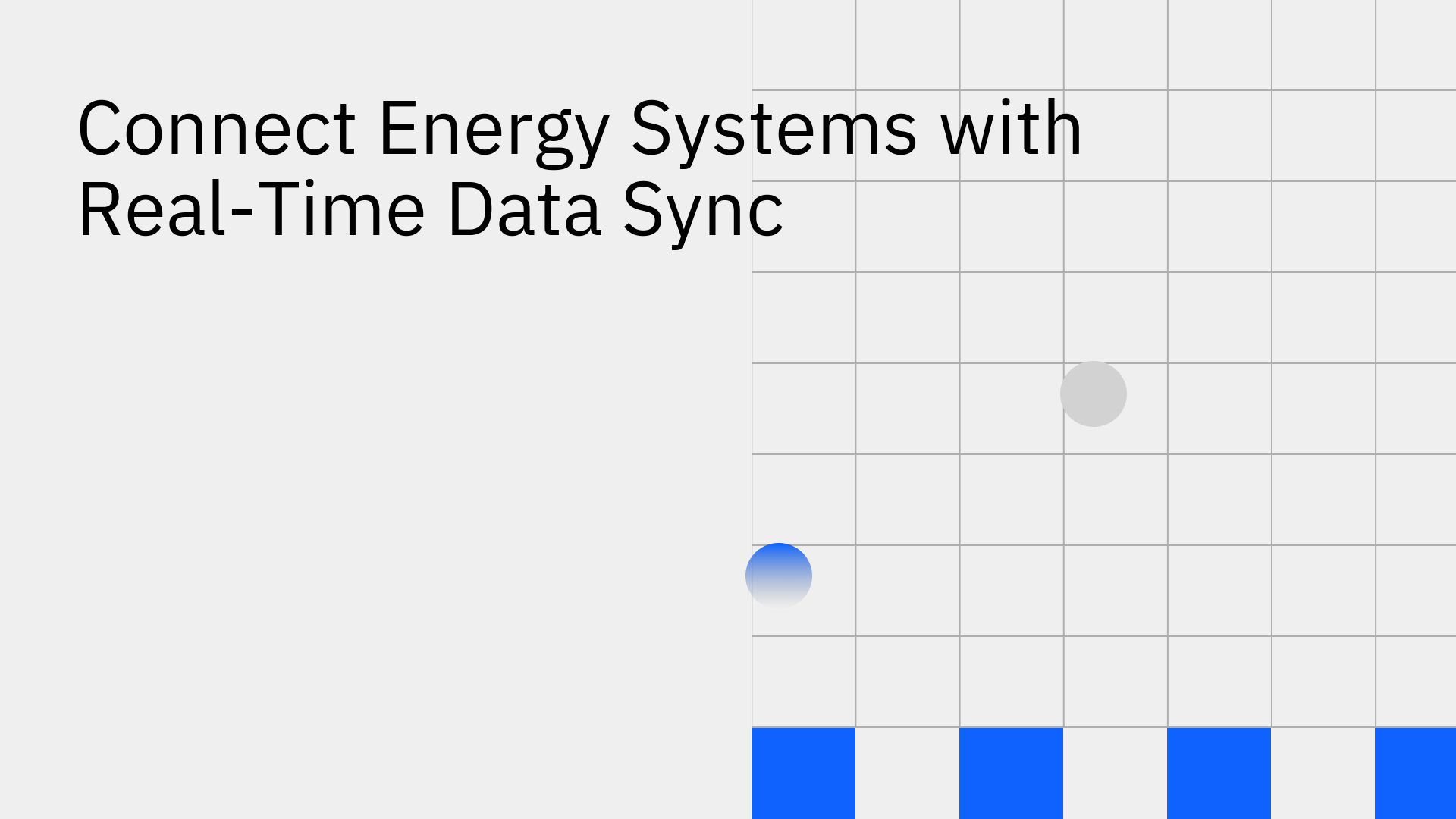
The energy sector is undergoing a profound transformation, driven by the imperatives of decentralization, decarbonization, and digitalization. This paradigm shift generates massive volumes of data from an increasingly complex ecosystem of sources, including smart meters, IoT sensors, distributed renewable assets, and legacy grid infrastructure.
The core challenge is that these data sources often operate in isolated silos, creating information latency that hinders operational efficiency, delays critical decision-making, and stifles innovation.
Real time energy data management systems have emerged as the critical architectural solution to unify these disparate systems, break down data silos, and unlock a new level of operational excellence.
Foundational platforms like Stacksync are engineered to provide the real-time connectivity that powers these modern energy systems.
Today’s energy companies face unprecedented challenges, from integrating fluctuating renewable energy sources and managing distributed energy resources (DERs) to enhancing overall grid resilience. Traditional data management strategies, which often rely on batch processing and periodic updates, are no longer sufficient to manage a dynamic and complex modern grid.
The electricity sector is the largest source of global CO2 emissions, making its decarbonization a top priority [6]. Real-time data is essential for tracking and reducing these emissions effectively [6]. Access to instantaneous insights allows operators to move from a reactive posture, responding to outages and demand spikes after they occur to a proactive one, where they can anticipate and mitigate issues before they impact the grid.
An Energy Management System (EMS) is a sophisticated system of hardware and software designed to monitor, control, and optimize energy flows across connected assets [3]. The "real-time" component is what distinguishes modern systems; they must be capable of processing high-velocity data streams in milliseconds to effectively manage grid dynamics, asset performance, and energy consumption. IoT-enabled systems are a prime example of this, providing continuous data feeds for immediate analysis and control [2].
The architectural backbone of any modern EMS is a powerful data synchronization layer. This layer ensures that information remains consistent and up-to-date across all connected platforms, including SCADA systems, Enterprise Resource Planning (ERP) software, Customer Relationship Management (CRM) platforms, and asset management tools. However, the effectiveness of an EMS is entirely dependent on the quality and integrity of this data sync.
A failure or high-latency in the sync layer can lead to incorrect automated decisions with significant operational consequences. Understanding the technologies that power this backbone is crucial, as not all sync solutions are created equal.
Exploring a comparison of real-time data sync technologies reveals the technical nuances that separate high-latency batch processes from true, low-latency bi-directional synchronization.
By integrating real-time sensor and operational data from assets like transformers, wind turbines, and solar panels, energy companies can enable powerful AI-driven analytics. T
hese analytics can forecast equipment failures before they happen, allowing maintenance teams to shift from costly, reactive repairs to proactive, scheduled maintenance cycles. This approach minimizes unplanned outages and extends asset lifespan.
While these models are powerful, their accuracy depends on a consistent feed of high-quality data. Stacksync for the energy industry provides the reliable data integration fabric necessary to feed these predictive models with a continuous, verified stream of operational data, directly supporting robust predictive maintenance strategies.
Real-time data synchronization is fundamental to balancing electricity supply and demand on an instantaneous basis—a critical function for maintaining grid stability.
It provides an accurate, up-to-the-second view of energy generation and consumption, allowing for the seamless integration of variable renewable sources like solar and wind. Real-time performance monitoring is particularly vital for optimizing grid-connected photovoltaic (PV) and battery systems, ensuring they contribute effectively to the grid [1].
While this reliance on real-time data enhances control, it also necessitates a highly resilient infrastructure, as a data disruption could impact stability.
This is why data integration platforms tailored for the energy sector with built-in redundancy and error handling are instrumental in supporting both renewable energy integration and broader smart grid management initiatives.
Real-time monitoring allows companies to pinpoint energy waste, optimize asset consumption patterns, and automate demand-response actions like load-shedding with surgical precision.
The financial benefits are substantial; analysis shows that leveraging real-time data from smart meters can generate system benefits of $176 per customer annually [5].
Furthermore, advanced AI-based EMS platforms can help organizations achieve up to a 30% reduction in energy costs and a 10% decrease in CO₂ emissions [4]. This granular control not only lowers operational expenditures but also significantly reduces an organization's carbon footprint.
Stacksync is the foundational data synchronization and workflow automation platform that enables a modern, connected energy ecosystem. It provides the critical integration fabric the "plumbing" to connect disparate systems in real time, from legacy SCADA platforms and on-premise databases to modern cloud applications and ERPs. Stacksync acts as the central nervous system for your data, ensuring every part of the organization operates from a single, consistent source of truth.
!A diagram showing Stacksync at the center, connecting various energy systems like ERP, CRM, databases, and IoT platforms.
To thrive in the modern energy landscape, companies must dismantle data silos and embrace real-time data management as a core operational competency.
Real-time data synchronization is the key to improving grid stability, enabling predictive maintenance, seamlessly integrating renewables, and driving down operational costs. Stacksync provides the essential, enterprise-grade integration tool for energy companies looking to build a resilient, efficient, and data-driven operation for the future.
Ready to connect your energy systems and unlock the power of your data? Explore Stacksync's solution for Real-Time Data Integration for the Energy Industry.